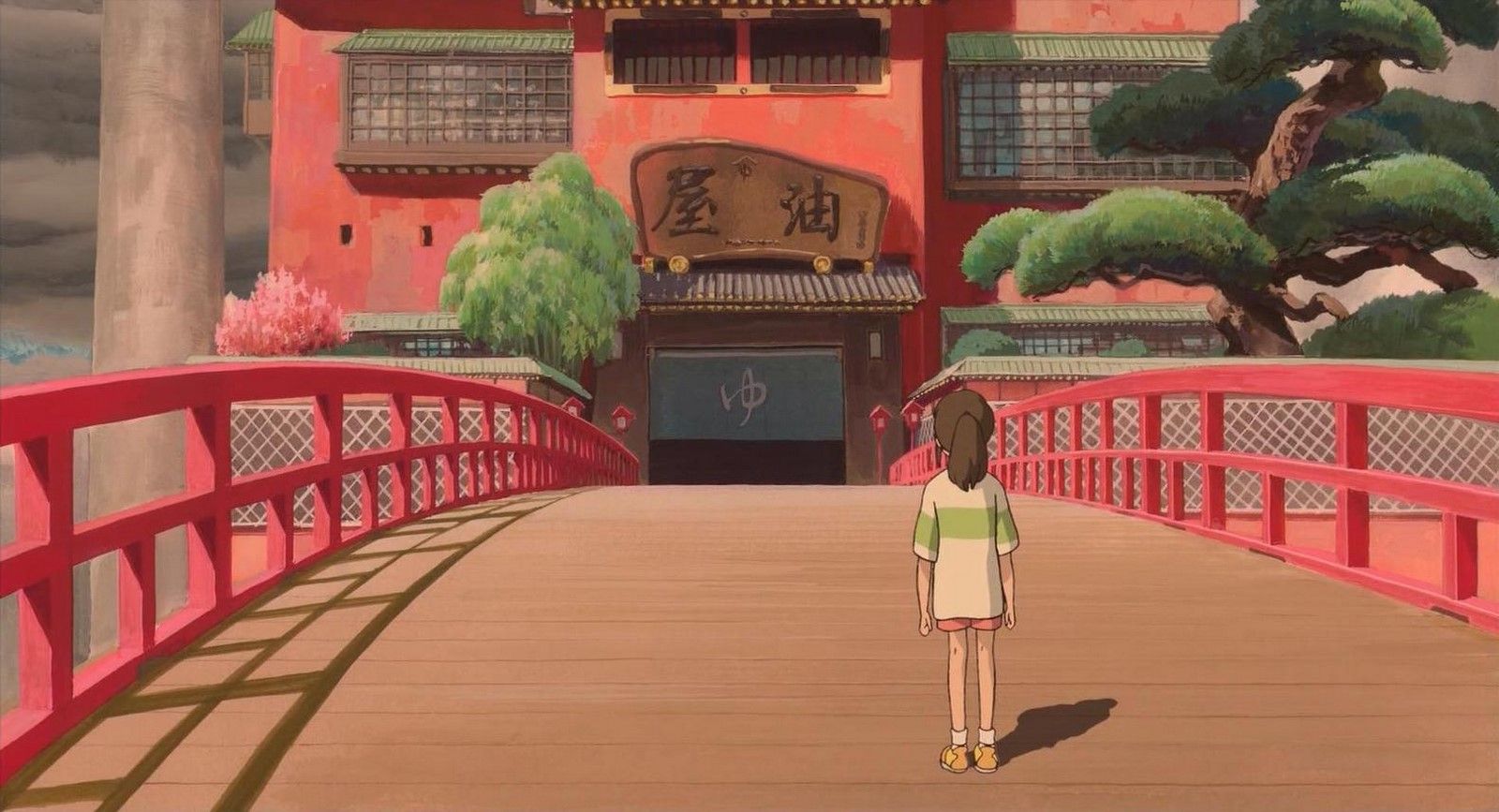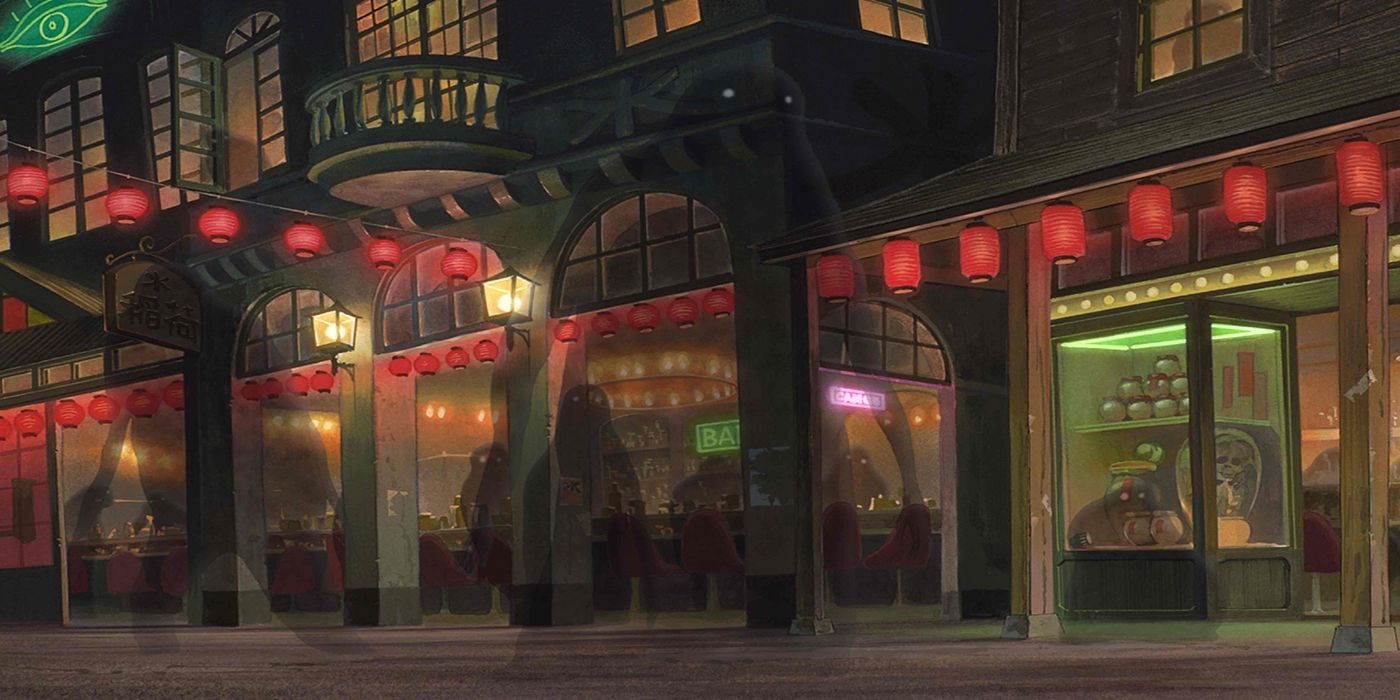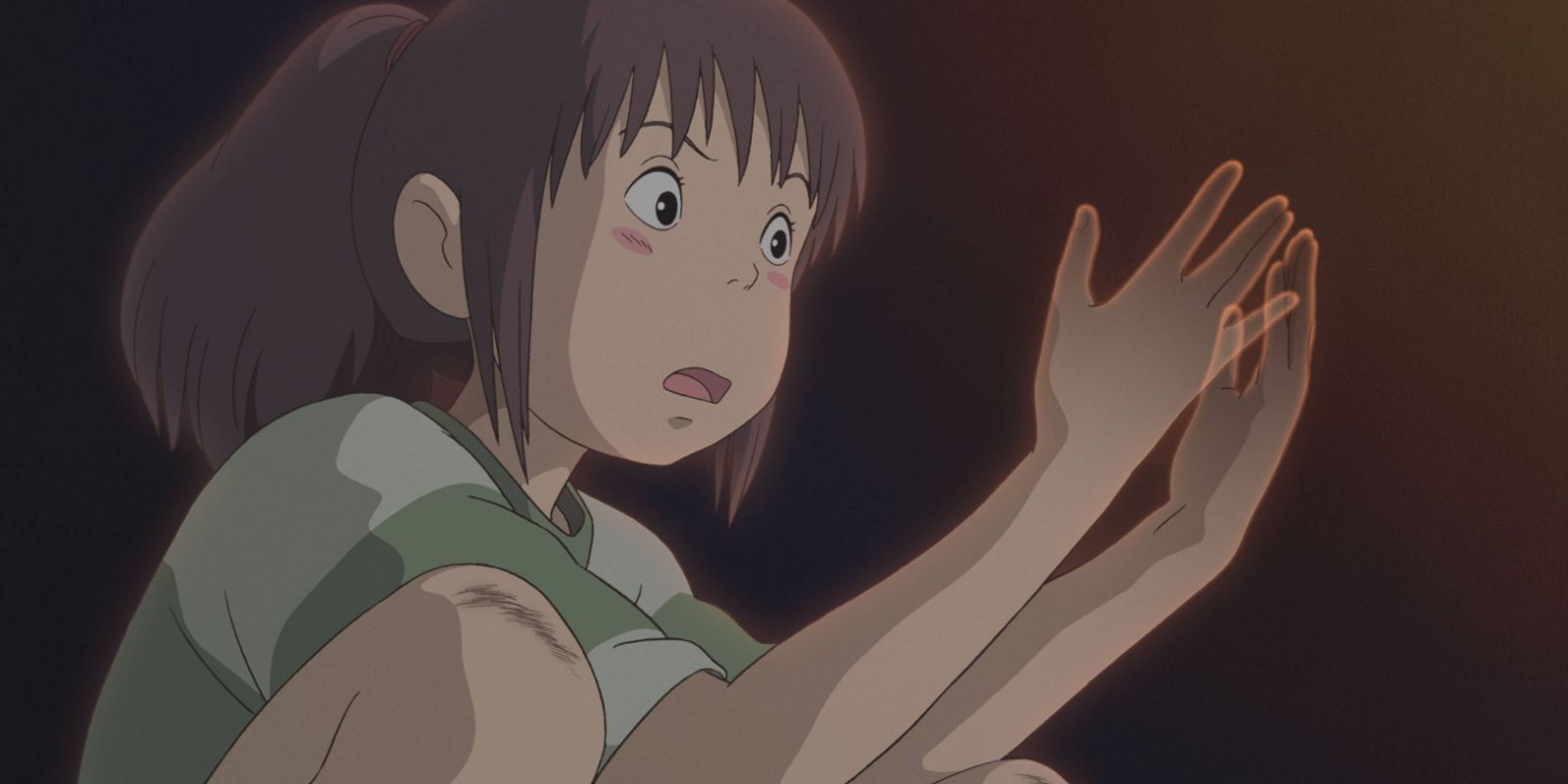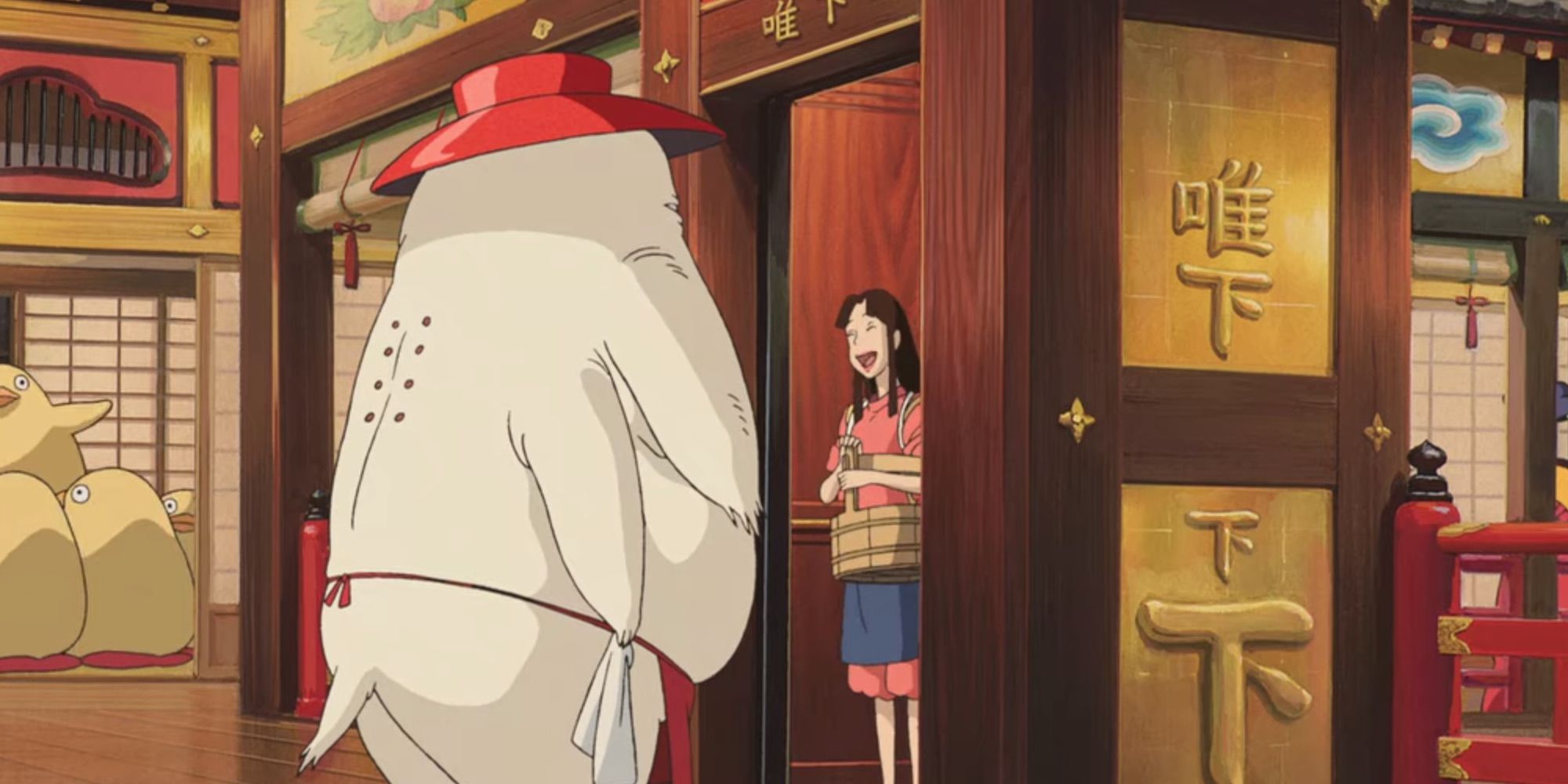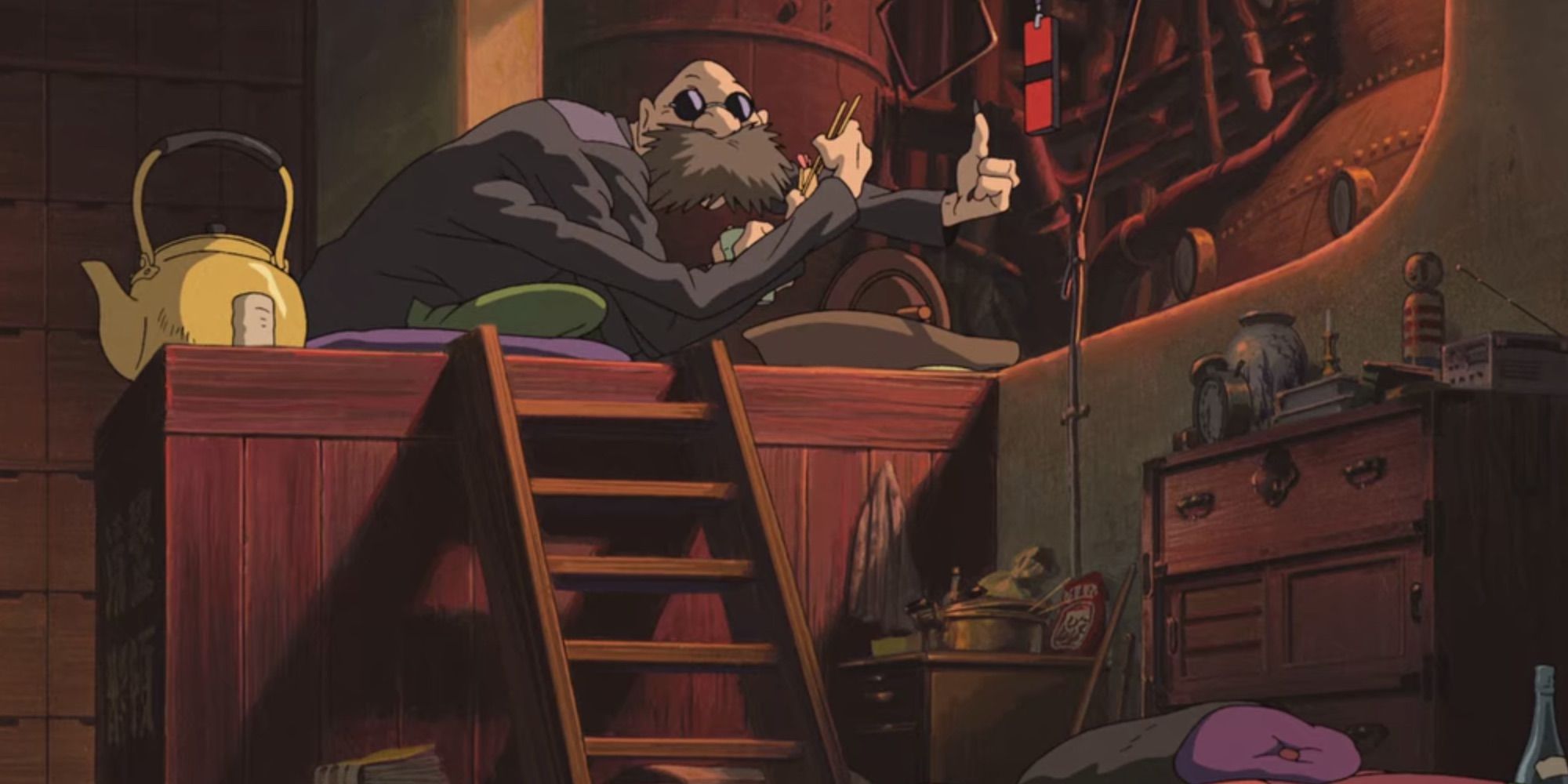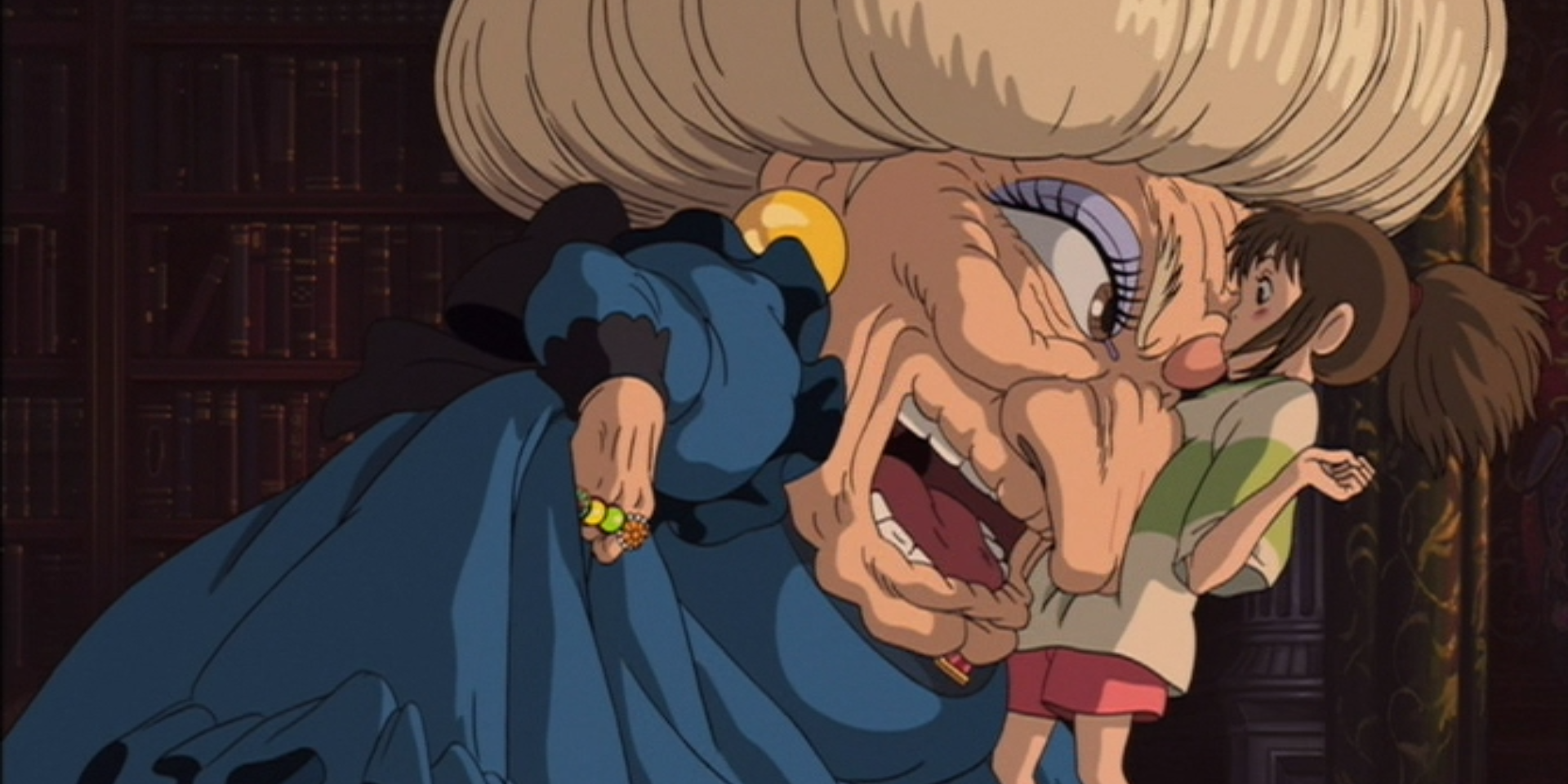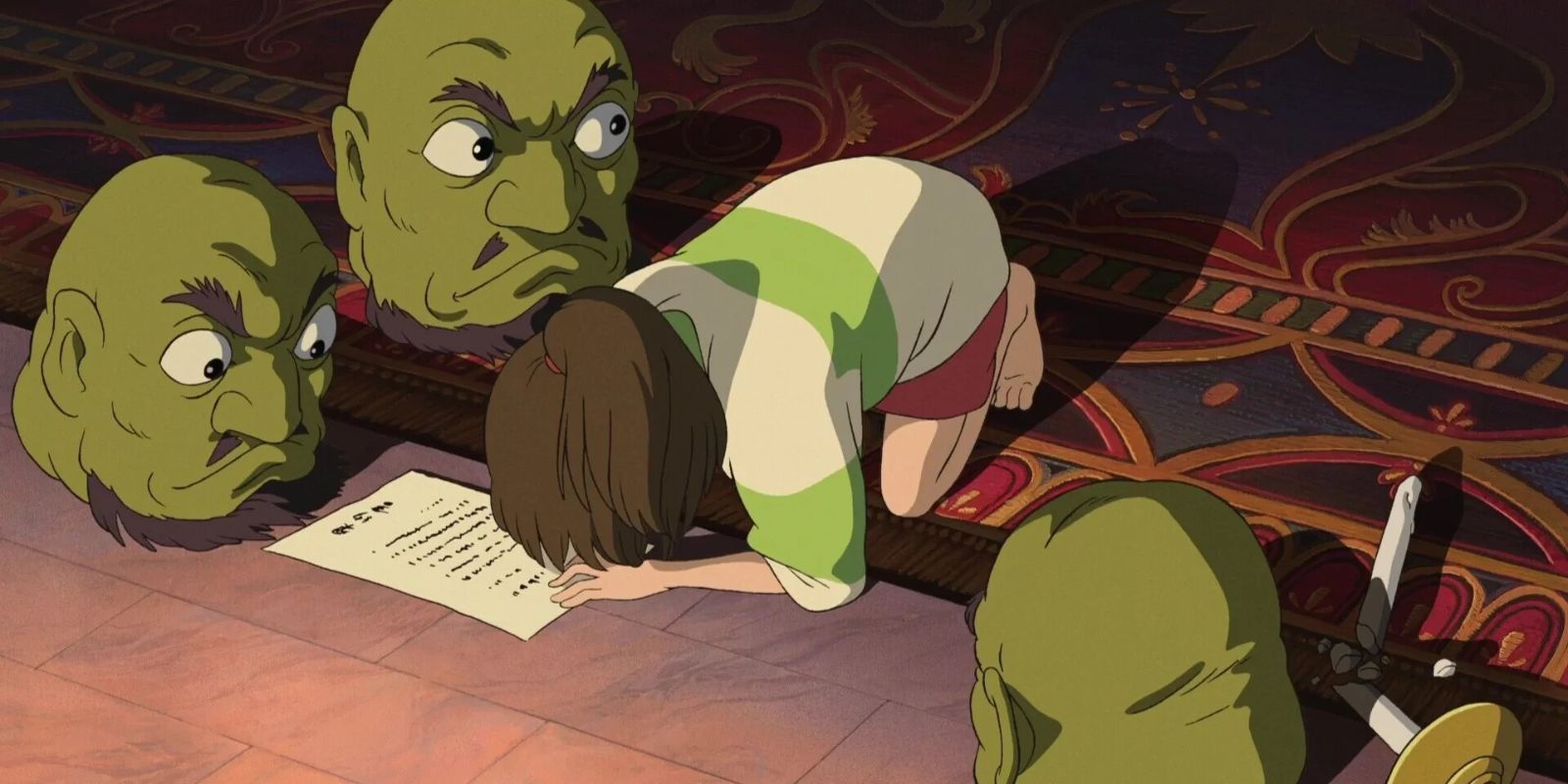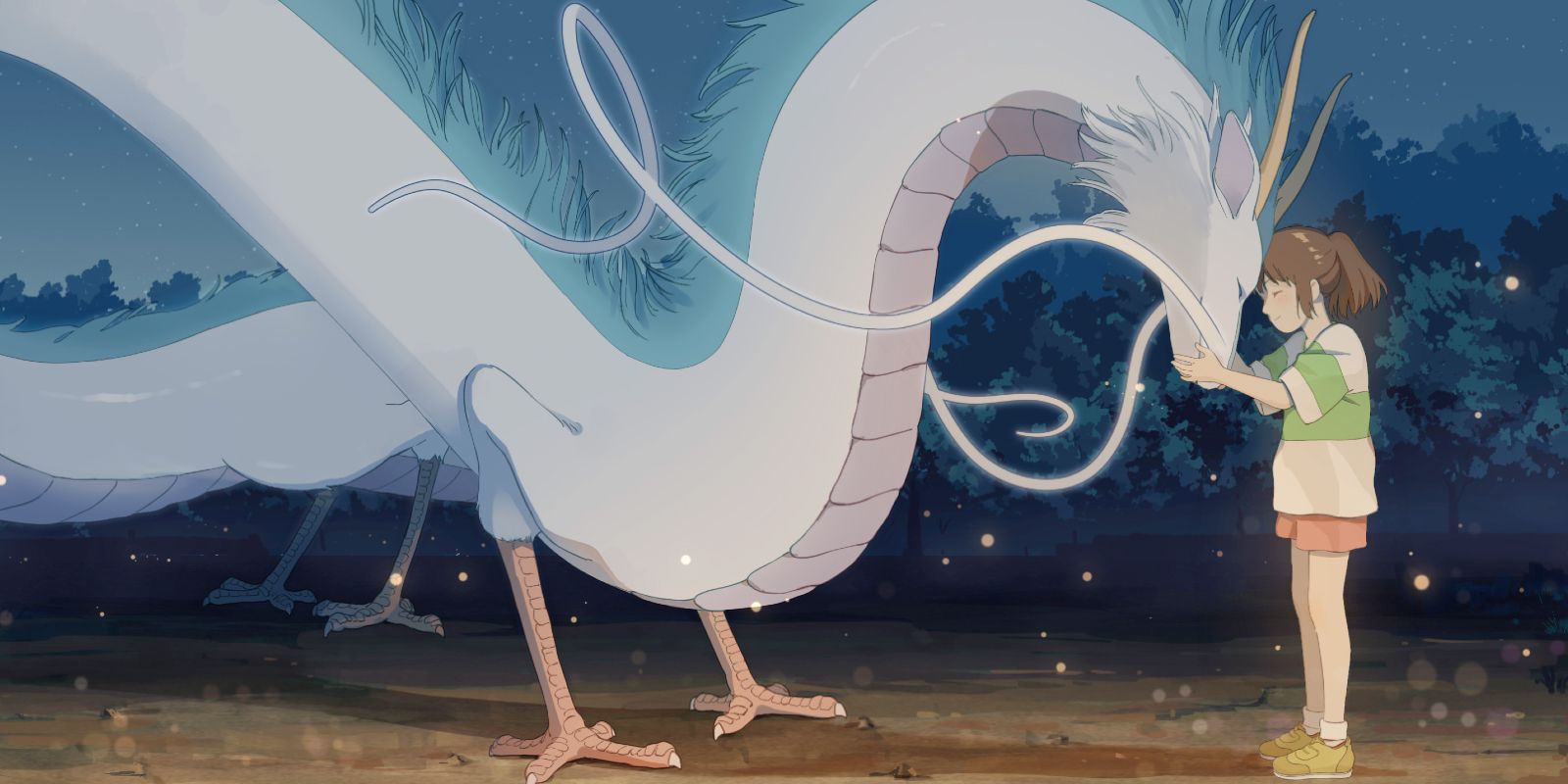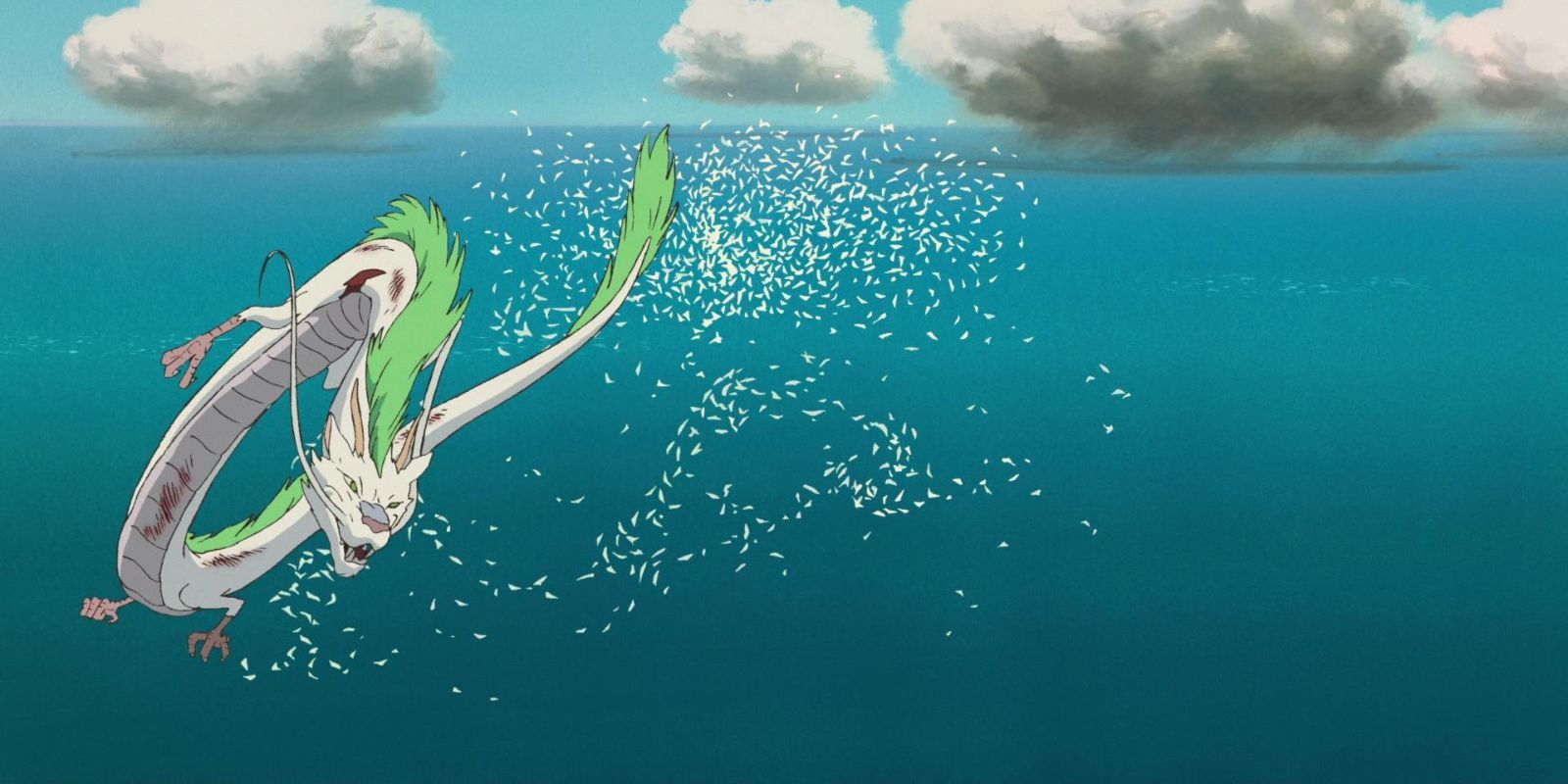Hayao Miyazaki’s Spirited Away borrows its characters and setting from Japanese folklore. Spirited Away is often considered Miyazaki’s masterpiece and won him his Academy Award for Best Animated Feature at the 75th ceremony. The film follows a young girl, Chihiro, who is transported to the spirit world where she begins working at a bathhouse for all the mystical spirits. As the only human in the world, Chihiro deals with loneliness, abandonment, and grief as she struggles to find a way to return her and her parents back to the human world. It is an excellent film about finding friends and purpose in a difficult situation.
Filmmaker Miyazaki’s best movies draw upon Japanese legends and mythology to tell his stories. The very core of Spirited Away is centered around the folklore from Miyazaki’s home and uses the lessons and ideas from Japanese Shinto, Buddhism, and Japanese folklore to help support the themes of the film. Chihiro is forced to grow up once she arrives in the spirit world and her journey sees her becoming a more self-actualized person. The spiritual ideas highlight her journey and the characters populating the film are taken from folklore and religion entirely or are used as templates to create something new.
The Shinto Religion Is Central To Spirited Away
The look and feel of Spirited Away are based on the Japanese Shinto religion, an East Asian religion based on animism and polytheism. In this religion, there are many kami spirits that inhabit everything in the world. The spirits attending and working at the bathhouse are all kinds of kami. Shinto also has a focus on cleanliness or, harae, which revolves around washing oneself of impurities, and a perfect place for a kami to cleanse itself of impurities would be a bathhouse. Even the building itself is heavily influenced by the look of Shinto shrines found all over Japan.
Spirited Away’s Japanese Title Is A Folklore Reference
The original title of Spirited Away is Sen to Chihiro no Kamikakushi, literally Sen and Chihiro’s Spiriting Away. In Japanese folklore, kamikakushi refers to someone being spirited away by the kami or gods in the Shinto religion. In the horror movie-like scene in Spirited Away, Chihiro’s parents anger the kami by consuming their food. For their misdeeds, Chihiro’s parents are transformed into pigs, but it’s Chihiro who is “spirited away”. This generally happens when someone has displeased the kami, and they are abducted rather than allowed to pass on somewhere else after death. It’s both a play on words and a literal definition of what happens to the protagonist.
The Residents Of The Bathhouse Are Kami
When Chihiro first finds her way to the bathhouse, she sees a large boat approach and watches a variety of fantastical-looking kami disembark. Kami in the Shinto religion refers to the gods and spirits that inhabit everything. The radish spirit is one of the best spirits in Spirited Away and one of the first Chihiro encounters. Despite his intimidating stature and presence, he ends up being a helpful and kind spirit. Chihiro herself ends up helping not one but two river spirits. While kami are not human, their mannerisms and actions help Chihiro realize that she is not so alone in the spirit world and can actually be someone there.
Kamaji Is Based On Tsuchigumo
One of the first friends Chihiro makes is the boiler man, Kamaji. He is an elderly gentleman with many long arms that he uses to do multiple tasks at once to keep the water and minerals flowing in the bathhouse. The mythological origin of Kamaji in Spirited Away is a spider-like yōkai called the Tsuchigumo. With six arms to accompany his two legs, Kamaji does resemble the Tsuchigumo from Japanese folklore. Tsuchigumo are also said to be involved with agriculture and work to appease angry kami. As the man in charge of the mineral baths who uses a variety of herbs, Kamaji appears to be some variation of that yōkai.
Yubaba Is Based On Yama-Uba
The owner of the bathhouse in Spirited Away is the witch Yubaba. She is a powerful magic spirit who runs her bathhouse with a firm hand. Yubaba is based on a yōkai, a supernatural entity from Japanese folklore, in this case, one named Yama-uba. Yama-uba is a spirit of an old woman that lives in the mountains. While some versions of the Yama-uba are dangerous, others are less sinister and associated with raising young children. This is a fair analogy to the Ghibli villain Yubaba who, while certainly the antagonist, still cares about her baby and is more of a domineering manager rather than an outright evil demon.
The Three Heads Are Based On Daruma Dolls
Among the many strange magical items and creatures in Yubaba’s quarters, are three angry-looking bouncing heads, named the Kashira or, “heads”. These green, bearded Kashira bounce around Yubaba’s office acting either as some sort of alarm or perhaps just an oddity for her enjoyment. The heads bear a close resemblance to the Daruma dolls of Japanese tradition. The Daruma doll is a stylized head that the owner uses to set a goal. Once to goal is achieved, the Daruma doll’s white eyes are colored in. It’s notable that the Kashira in Spirited Away have obvious pupils meaning there may have been three specific goals Yubaba achieved.
Haku’s Dragon Form Is A Traditional Japanese Creature
Haku, one of Studio Ghibli’s best non-human characters, is the first spirit Chihiro meets when she enters the spirit world in Spirited Away, and he becomes her protector and friend. Haku often takes the form of a blue dragon. This dragon design is a classic of Japanese folklore. Many of the Japanese dragons are also water deities. So while the film does not reveal Haku’s identity until the end, his other form as an Eastern dragon is a hint that Haku may have a relationship with water. This is proved to be true when he learns he is the avatar of the Kohaku River.
Shikigami Are The Small Kami Who Attack Haku
During No-Face’s rampage in Spirited Away, Chihiro sees a flying Haku flying become overwhelmed by hundreds of tiny bird-shaped papers, despite being one of the most powerful and best anime dragons. These papers are known as shikigami and are ghost-like kami that can be used by powerful spirits. The powerful spirit in charge of these shikigami turns out to be Yubaba’s twin sister, Zeniba, who is trying to retrieve a talisman from Haku. The shikigami are something akin to curses in the spirit world and the way they nearly kill Haku is evidence of their power. Everything in Spirited Away has a meaningful purpose, including tiny pieces of paper.

